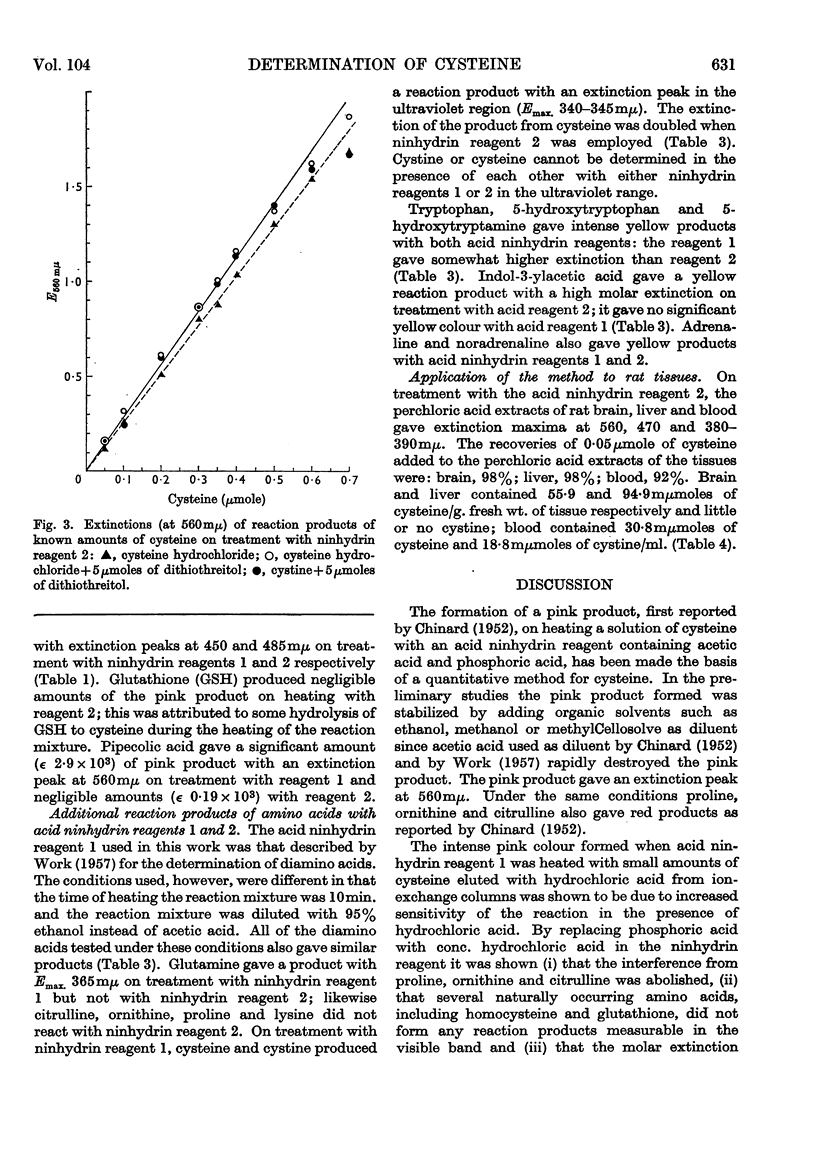Abstract
1. An acid ninhydrin reagent was found to react specifically in forming a pink product (Emax. 560mμ) with cysteine. 2. The method was highly sensitive for the determination of cysteine (∈ 28·0×103). Homocysteine, glutathione, proline, ornithine and other naturally occurring amino acids tested did not give a similar reaction. 3. The reaction product was stable for at least 3–4hr. at room temperature and the extinction was proportional to the concentration in the range 0·05–0·5μmole of cysteine. 4. The acid ninhydrin reagent also gave yellow products (Emax. 370–404mμ) with tryptophan, 5-hydroxytryptophan, 5-hydroxytryptamine and indol-3-ylacetic acid. 5. The method was applied for the determination of cysteine in perchloric acid extracts of rat brain, liver and blood.
Full text
PDF






Selected References
These references are in PubMed. This may not be the complete list of references from this article.
- CHINARD F. P. Photometric estimation of proline and ornithine. J Biol Chem. 1952 Nov;199(1):91–95. [PubMed] [Google Scholar]
- CLELAND W. W. DITHIOTHREITOL, A NEW PROTECTIVE REAGENT FOR SH GROUPS. Biochemistry. 1964 Apr;3:480–482. doi: 10.1021/bi00892a002. [DOI] [PubMed] [Google Scholar]
- GILVARG C. The enzymatic synthesis of diaminopimelic acid. J Biol Chem. 1958 Dec;233(6):1501–1504. [PubMed] [Google Scholar]
- MOORE S., STEIN W. H. A modified ninhydrin reagent for the photometric determination of amino acids and related compounds. J Biol Chem. 1954 Dec;211(2):907–913. [PubMed] [Google Scholar]
- TROLL W., CANNAN R. K. A modified photometric ninhydrin method for the analysis of amino and imino acids. J Biol Chem. 1953 Feb;200(2):803–811. [PubMed] [Google Scholar]
- WORK E. Reaction of ninhydrin in acid solution with straight-chain amino acids containing two amino groups and its application to the estimation of alpha epsilon-diaminopimelic acid. Biochem J. 1957 Nov;67(3):416–423. doi: 10.1042/bj0670416. [DOI] [PMC free article] [PubMed] [Google Scholar]


